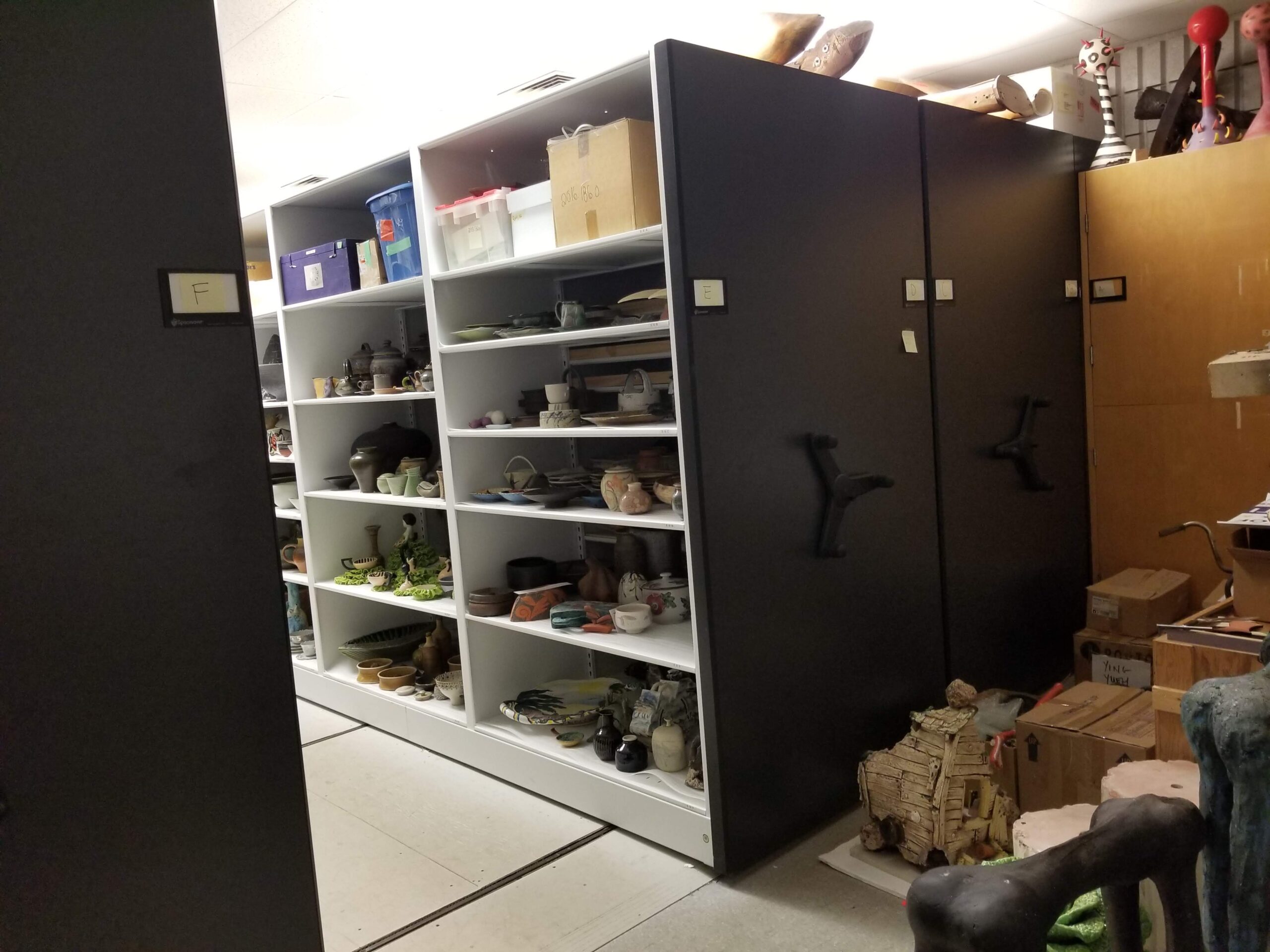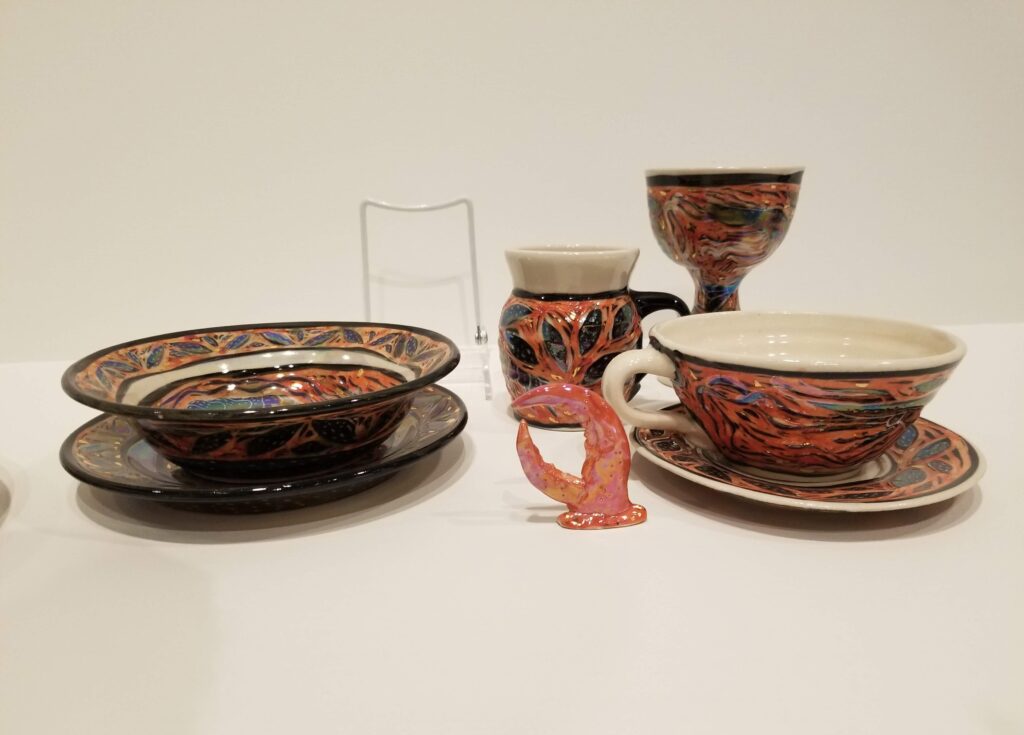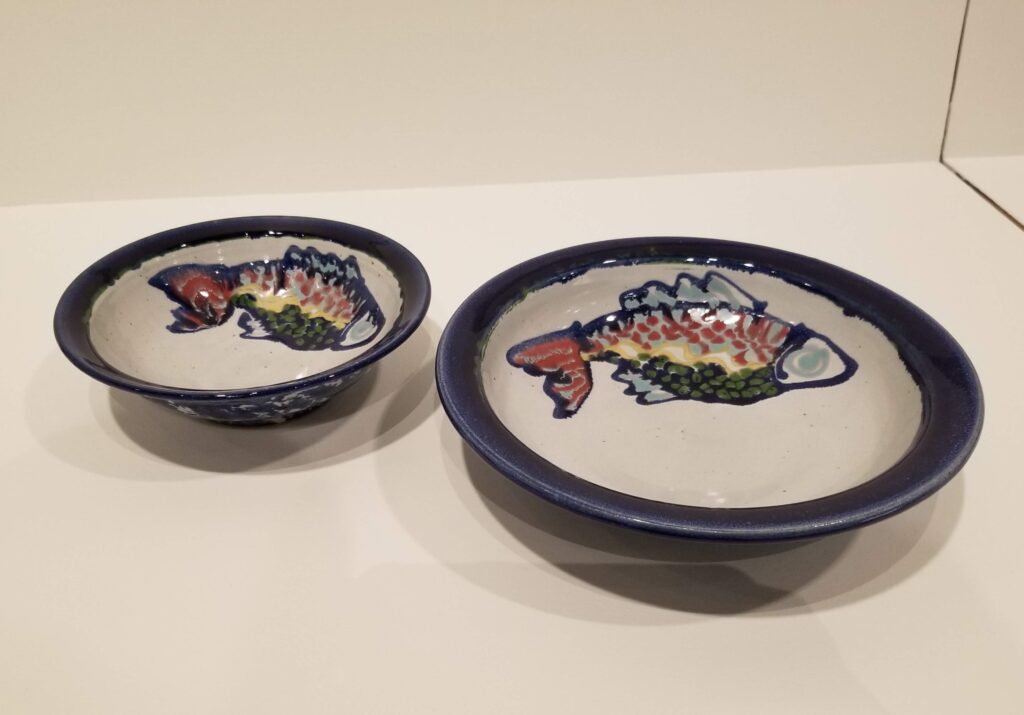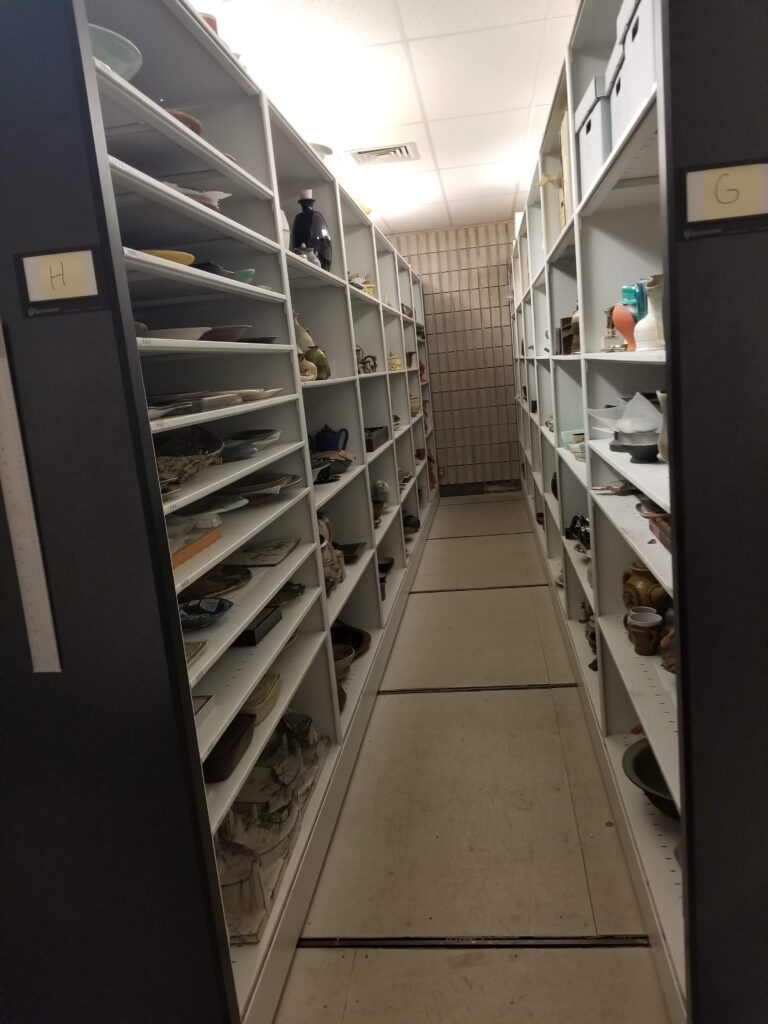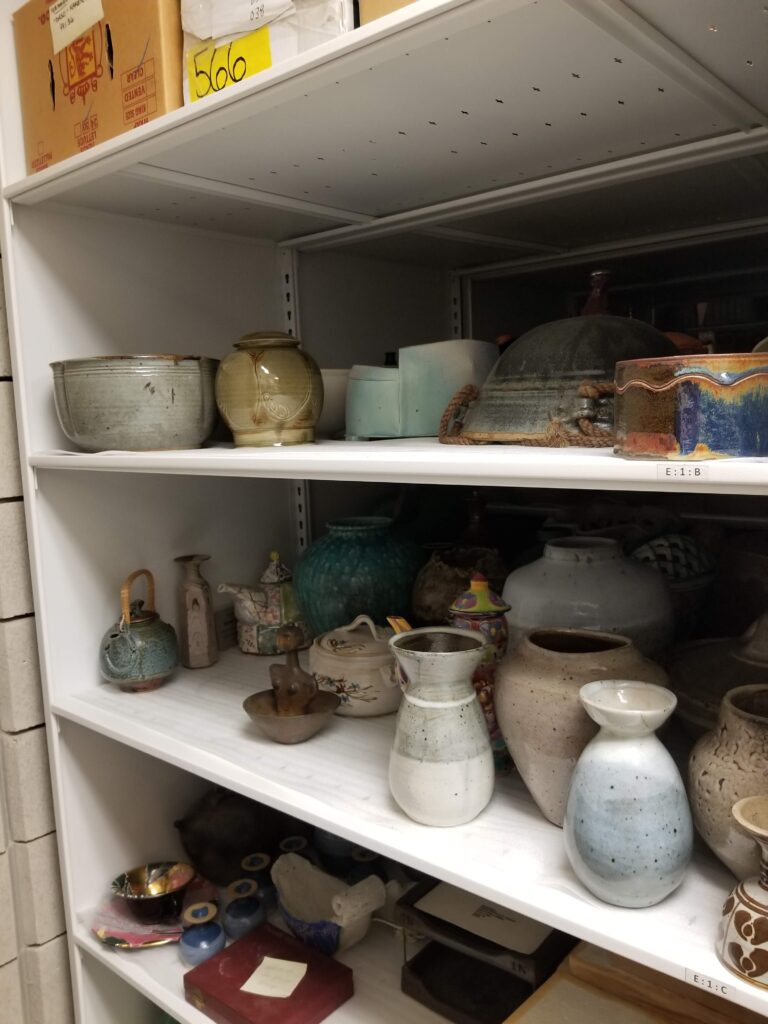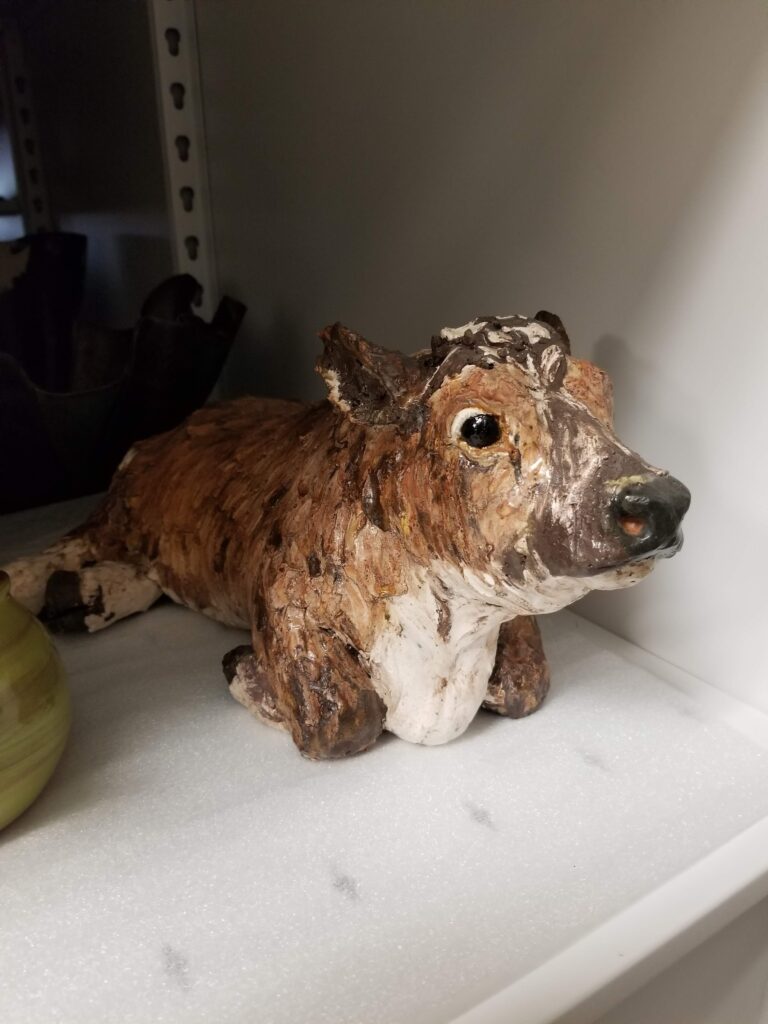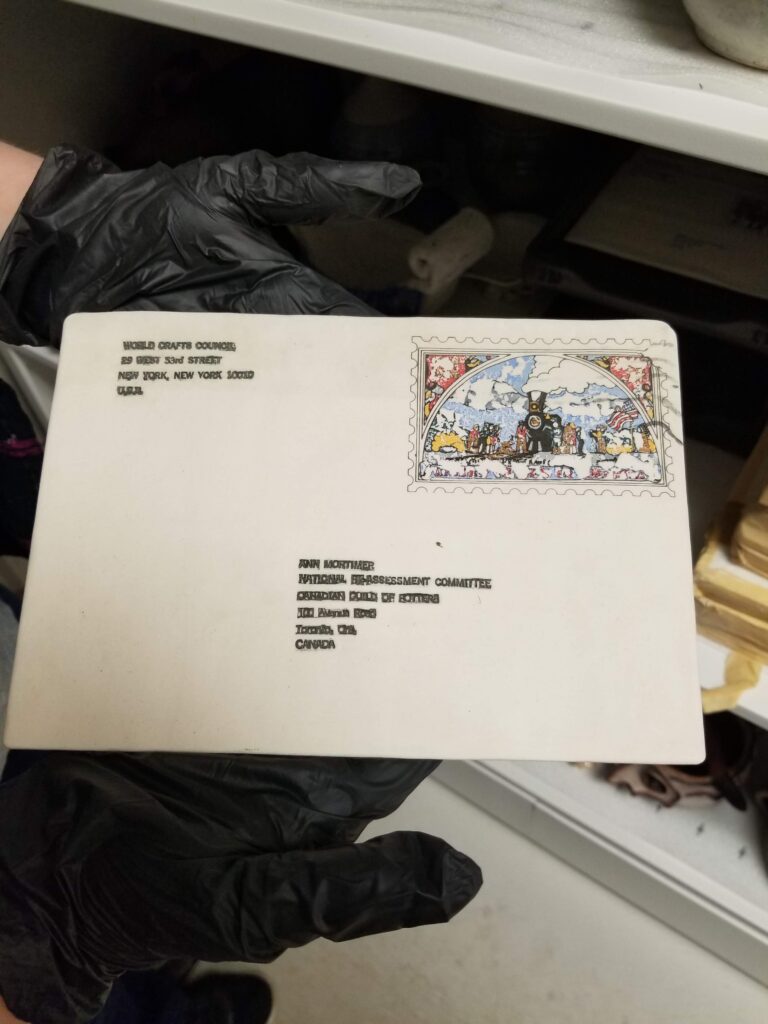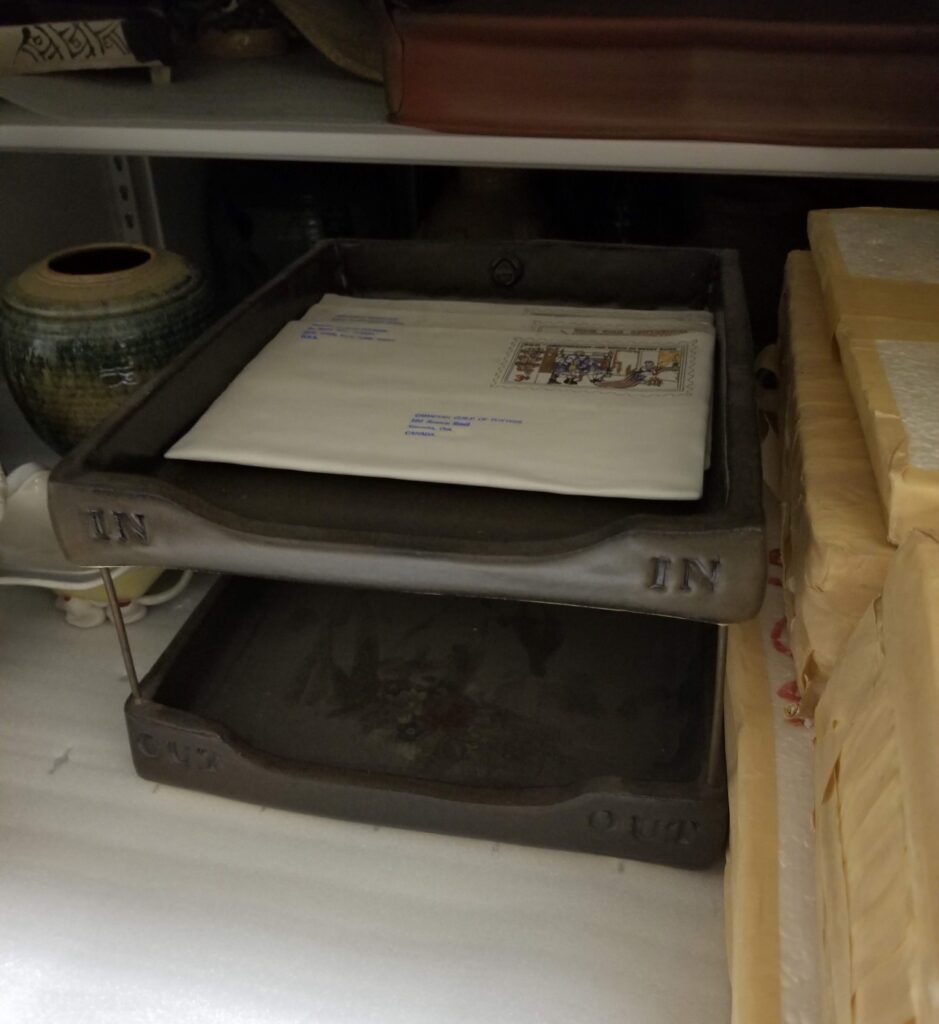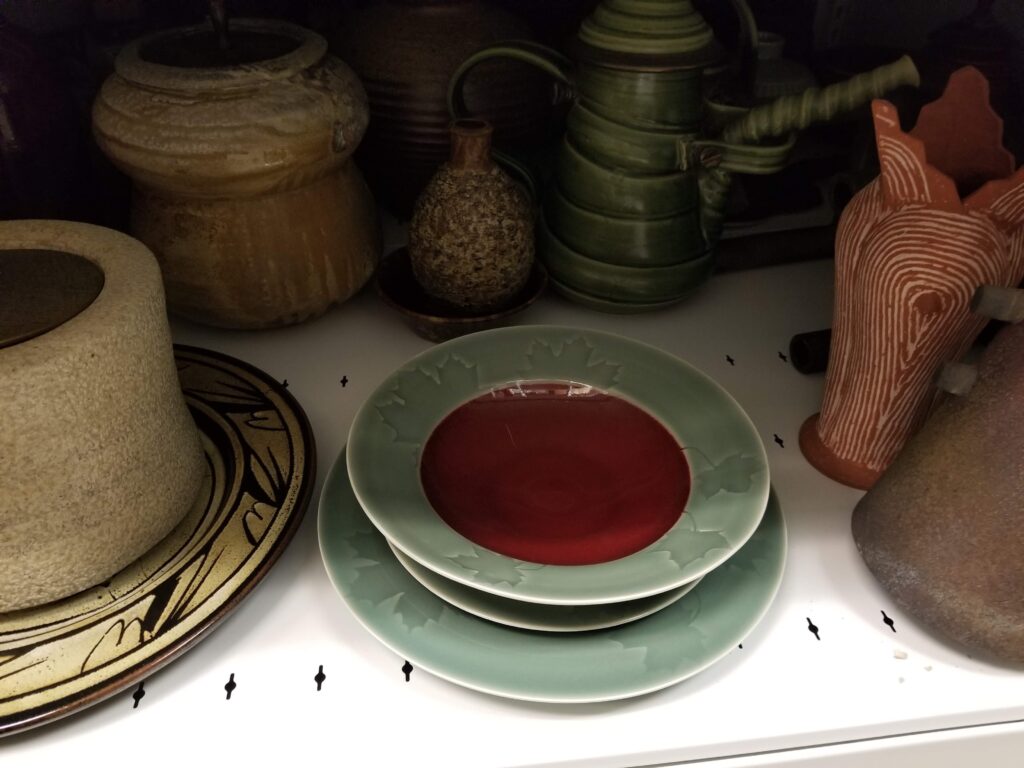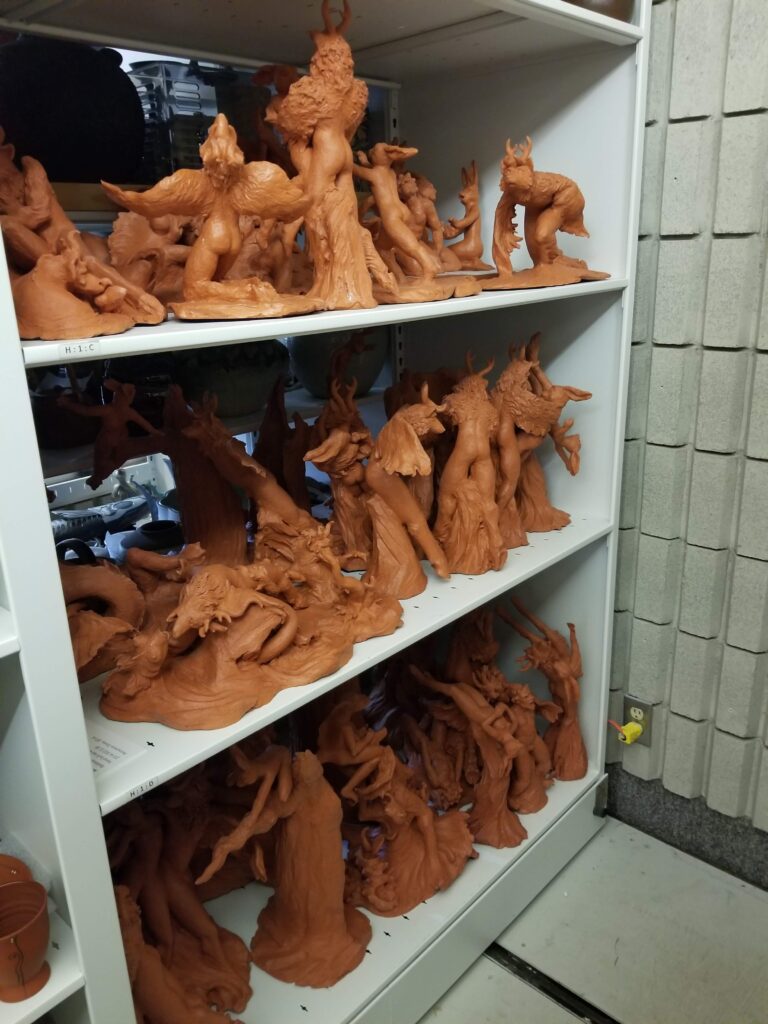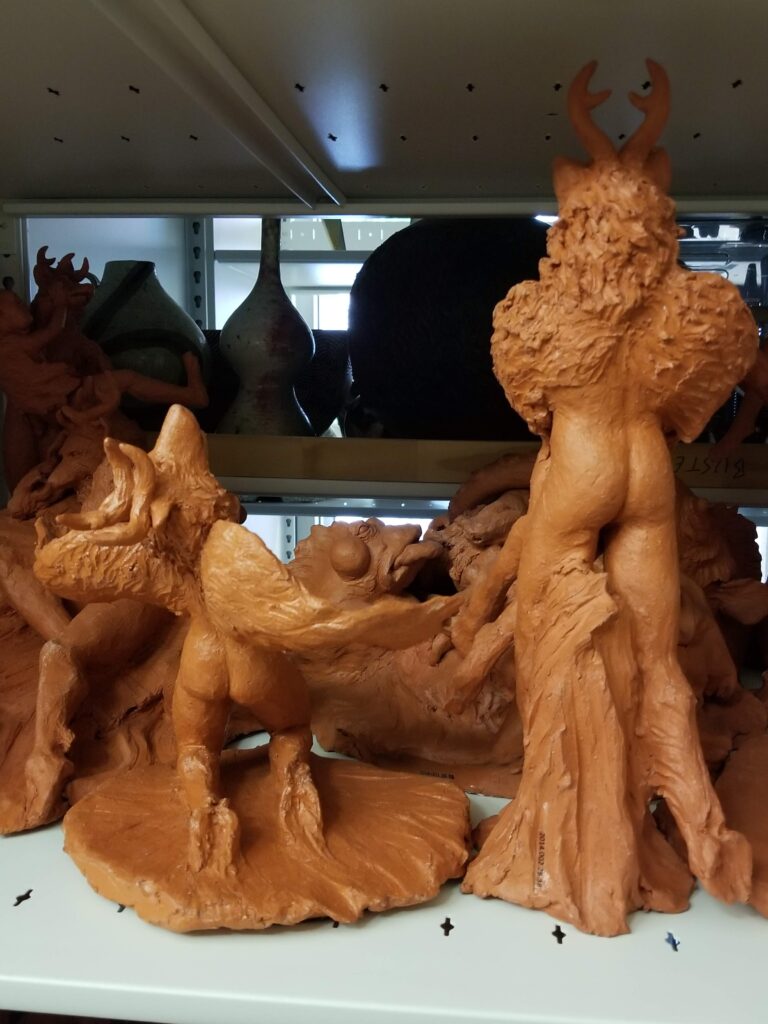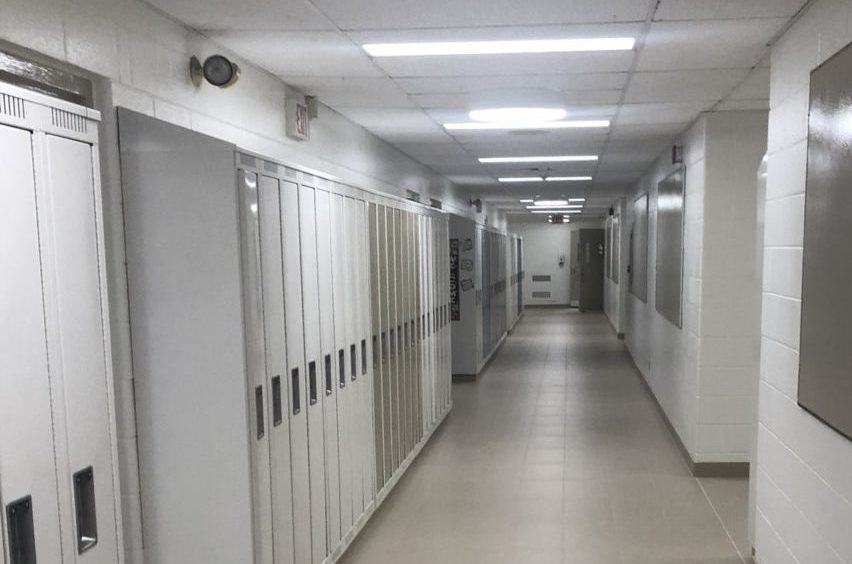In celebration of the Art Gallery of Burlington’s 40 years and the City of Burlington’s 150+ years, visitors to the Art Gallery of Burlington (AGB) will soon be able to tour the Weight of Clay alongside senior curator Suzanne Carte, to learn some of the stories behind the exhibit. Join the tour on Saturday, Aug. 12, from 1 p.m. to 2 p.m., as part of the city’s Heritage Week events; no registration is required.
Carte’s knowledge and passion shine through when she speaks of the AGB’s collection and the coast-to-coast-to-coast representation held in the collection; the tour is sure to enlighten participants and deepen their appreciation for the AGB’s holdings.
Carte and Collections Manager Christine Saly, alongside their team, were busy setting up the summer iteration of the Weight of Clay when we went for a behind-the-scenes look at both the exhibit and the vault from which it came. The AGB holds the largest collection of contemporary Canadian ceramics in the world, with donated and purchased pieces representing a range of styles and artists. The Lee-Chin Gallery was full of the sounds of drilling and team members’ discussions and the smell of fresh paint as we wandered amongst the tables full of archival material and beautiful ceramics.

The “taster” version of the Weight of Clay ran from March until the end of May; this second stage of the exhibit, running until Oct. 8, features a wider range of artists and more pieces — one for each of the AGB’s 40 years. Larger-scale pieces that were once displayed outside are included, such as Kasia Piech’s 2007 Seven Deadly Sins Garden Bench. While the AGB’s focus in the 1980s was on sculptural pieces, from 1990 onward brought more functional pieces, a number of which are featured in the Weight of Clay. Functionality, innovation, and beauty are not mutually exclusive though, which becomes clear when examining the dinnerware on display, including a napkin ring shaped like a lobster claw and Scott Barnim’s fish-themed bowl and plates — the curves of the vessels help capture the feeling of movement in the fish.
Also included in the Weight of Clay is the first donation from Herb O. Bunt, the collector whose 300-piece donation sparked the AGB’s specialized curation of Canadian contemporary ceramics, and a video featuring the movement around the AGB of its eels, by Jim Hong Louie, which are currently suspended from the ceiling over the Lakeshore entrance.
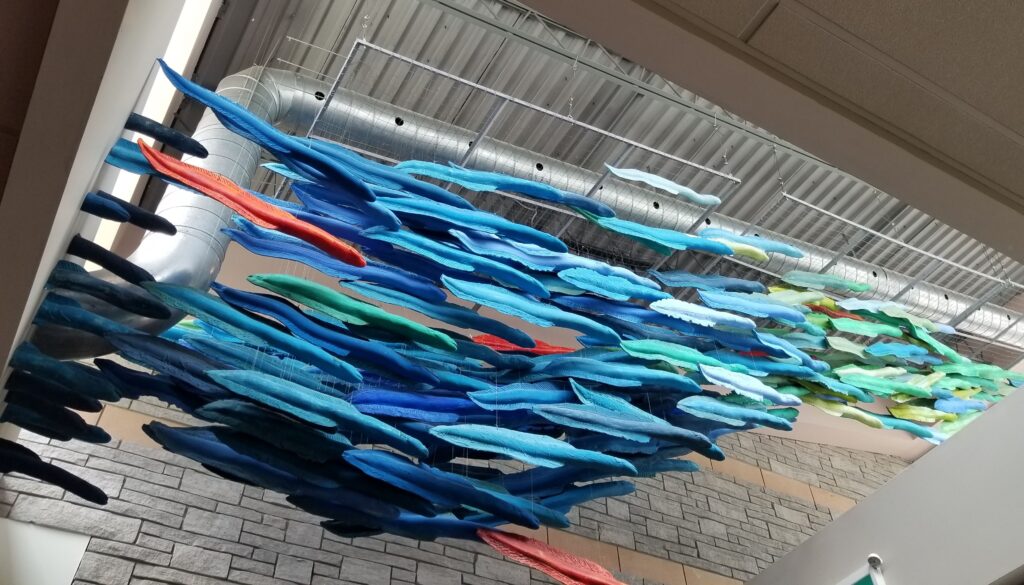
This exhibition was curated by Carte and the AGB’s curator emeritus, Jonathan Smith. The pieces were chosen from the collection of over 4000 pieces to represent the growth of the collection over time, the range of artists and styles, and innovation in techniques.
But where do all of these works of art live when they’re not on display?
In the vault.
The AGB’s vault is less steel-lined bank vault and more well-organized storeroom, featuring a row of long shelves on tracks. It may not be the biggest art gallery vault in southern Ontario, but there are treasures in every corner; a cow’s limpid ceramic gaze at the end of one shelf, a beautifully-detailed gilded flower vase in another, and a walrus’ palate and tusks at the other end (making one glad to not be on the receiving end of real walrus tusks).
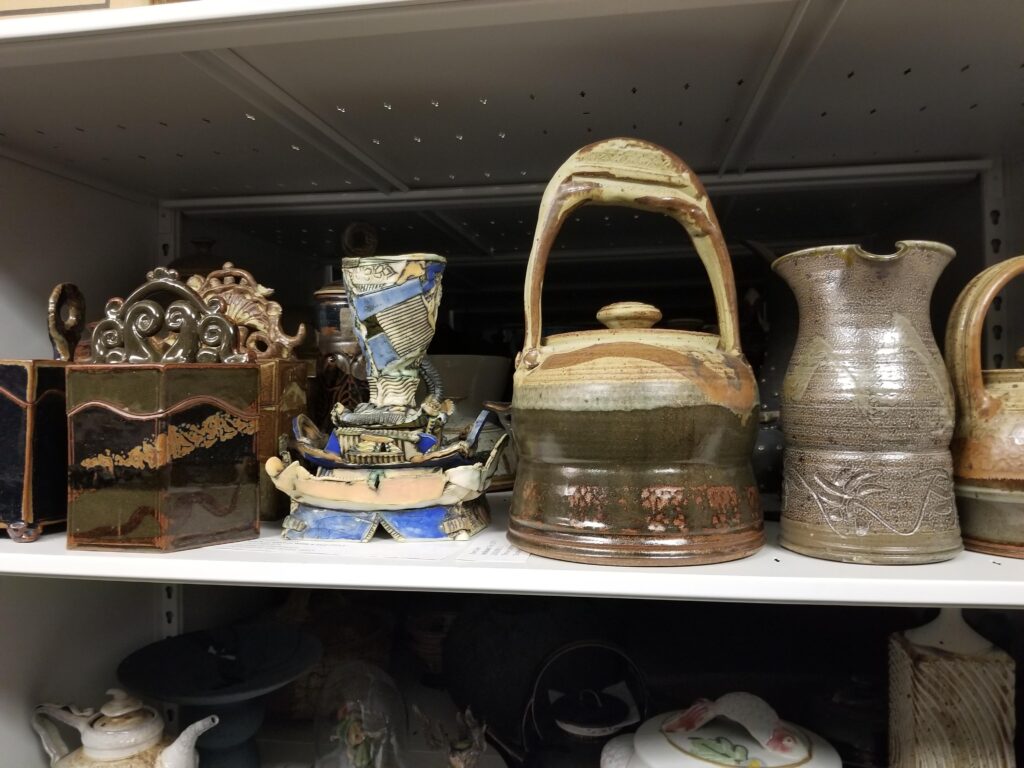
There is also a study collection for students to learn more about techniques and styles, and early local ceramics from a Burlington potter who later moved on to making sewage pipes.
Though contemporary ceramics are the AGB’s specialty, the collection includes some ceramic vessels from the Nanking Cargo, Chinese porcelain that the Dutch East India Company was taking to the Netherlands in 1752 aboard the ship Geldermalsen. The ship struck a reef in the South China Sea, taking its cargo and 80 crew members down with it. Explorer and treasure hunter Michael Hatcher recovered over 150,000 pieces of porcelain and 125 gold ingots from the shipwreck in 1985; Christie’s auction house in Amsterdam subsequently sold the porcelain. Much was the blue and white porcelain that would be recognizable to many and made to cater to European tastes, but there were also Chinese utensils made to export to other Asian countries, which are not often found in the Western Hemisphere. The AGB’s Nanking pieces look otherworldly, covered in barnacle exoskeletons and other deep-sea encrustations.


There are ostensibly functional mugs and saucers that look too heavy to lift, though Saly notes that “some master potters can make things look very heavy but are super light…[they create] a sense of weight.” There are purely functional pieces and pieces by artists who “take functional to fine art,” says Saly, as we admired one such gorgeously painted vase.
Each piece contains a story of some kind or is intended to spark conversation. There’s a Rideau Hall official dinner place setting by Bill Reddick in the collection; a bowl ringed with little cars and painted with a vibrant city scene made by a husband-and-wife team; there is a fantastically-petalled salt and pepper cellar. A poppy from the Tower of London’s Blood Swept Lands and Seas of Red public art installation commemorating the 888,246 British or Colonial servicemen killed in World War I (one poppy for each serviceman) is on one of the shelves, surrounded by teapots and vases; it arrived, says Saly, still with dirt caked on its metal stem.
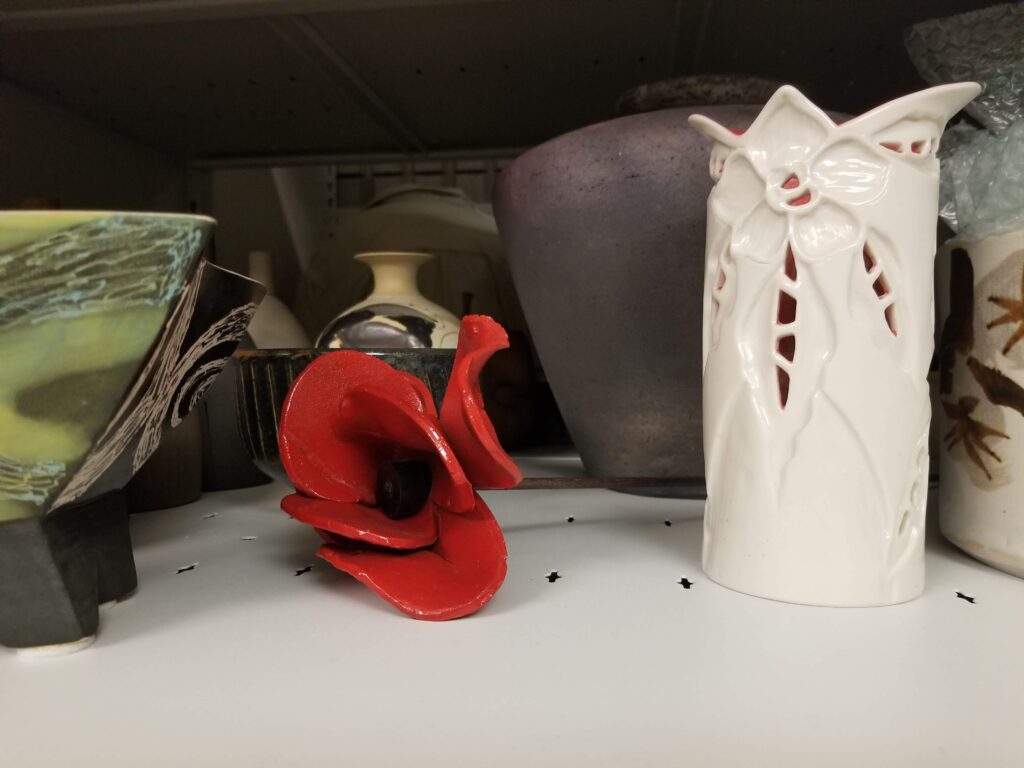
There is a whole section of shelving taken up by chimeric figures: winged, wolf-headed, and human-bodied creatures with antlers, rabbits with human bodies, lizard-headed humans and others, by artist Jordan MacLachlan, a series called Radiance in Uncontrollable Worlds. These figures were made with the intention of producing a stop-motion video, so there are repeating characters in different poses. When these works came to the AGB, MacLachlan had not yet made the video; the AGB procured some funding and the video was created, with themes of identity, trauma, and love.
While some pieces represent an important new technique, a movement towards an innovative new style or an early work from a respected artist, all certainly are more than that. Looking closer, learning a little more, considering the context in which each piece was made results in a story about some aspect of the human who made them — or even about humanity as a whole.
Heritage Week in Burlington promises a host of events to bring the community together, reminding us all of our shared history and humanity, not least the Weight of Clay tour on Saturday, Aug. 12, at 1 p.m. Don’t miss this chance to explore the fascinating world of Canadian contemporary ceramics and discover the human stories woven into each work.
Sources:
Vandor, D. 2020. Export porcelain and the Nanking Cargo. Waddingtons. Url: https://www.waddingtons.ca/chinese-export-porcelain-and-the-nanking-cargo/ (accessed July 23, 2023).
Wang, A. 2020. The Geldermalsen: Shipwrecks, treasure-hunters & the Nanking Cargo. Art Gallery of Greater Victoria Magazine. Url: https://emagazine.aggv.ca/the-geldermalsen-shipwrecks-treasure-hunters-the-nanking-cargo/ (accessed July 23, 2023).

